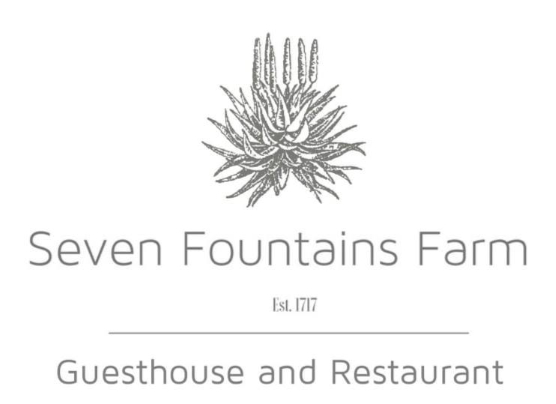Let us take you back to the year 1717 – back in time
A bit remote on the gravel road, hidden between the tall green trees you will find Seven Fountains Farm. A small oasis between all the untouched nature. From the moment you enter the gate you are greeted by all the different trees and plants like coral trees, sweet thorn, jacaranda, variegated agave, aloe vera, strelitzia, Cape lily and endless cactus species to name a few. As you drive down the driveway you will see our boma on the right, the original fireplace of the farm. A great place to sit during the day with a book or a cup of coffee or in the evening by the fire of course. When you sit here, you cannot ignore the great old walls that surround the boma. Did you know that these walls are a lot older than you think? We would like to take you back in time, more than 300 years!
Let’s start at the beginning: the farm was originally founded and build by the trekboer Jan Frederick Potgieter in 1717. Potgieter was a Dutchman. At the time, the area describing several farms was referred to as Assegai Bush. As more and more Dutch settlers came into the area, they nicknamed it Zaaiplaats (place of sowing seeds). The farm was chosen to build on because back in the day this was a strategical place to build, with on both sides steep tangled hills, dissected by deep and densely bushed valleys. The name of the area described by numerous military sources, all describing ruins of a big farm dating back to around 1717.
Frontier wars
During the first 3 Frontier Wars, ranging from 1779 to 1802, the Dutch settlers fought the local Xhosa population in the areas around what we now call Fish River and Grahamstown. In 1820 Zaaiplaats was renamed to the village of Seven Fountains. The story goes that a landing party from England came up from Port Elizabeth with seven men amongst them. Each of them was entitles to a water source (fontein) by the acting governor at the time. So, the seven men each claimed a place in the area with a water source. Hence the name: Seven Fountains.
We believe that one of the seven settlers choose the place we now call Seven Fountains Farm. On the old walls of Seven Fountains Farm, there is a difference in building style that shows Dutch and English architecture (boma area). There is clear evidence of military significance on the farm.
Restoring the farm
Over the next 100 years, there have been numerous English owners of the farms in Assegai Bush that were farmers. They were cattle farmers at the time. All the way up to 1993, the farm was inhabited and used for farming by English descendants. At some point, the farm was left behind and it became a ruin again. Around the year 2000, a Greek businessman bought the ruins and lands. He restored the buildings and was running the place as a guesthouse and restaurant called: Assegai Lodge.
After 2011, he left the farm behind without a successor. In the years that followed, the farm turned in a state of disaster, with no roof, no windows, no door and overgrown by bush full of dassies, monkeys and snakes. There are pictures in our restaurant to show what it looked like at that time. Around 2014 a Dutch couple bought the property and took three years to restore the place. The roof was put back on and new windows and doors were put in, the overgrown areas were cut down and in 2017 ‘The Old Farmhouse’ opened its doors.
Less than a year later this was renamed to: Seven Fountains farm. In December 2018, the current Dutch owners – Arnoud van der Klis and Marjanne Riemens – took over the farm and made the farm what it is today. So next time, when you are enjoying a fire at the boma and you touch the old walls, you know about all the history they hold.
Marjanne Riemens
